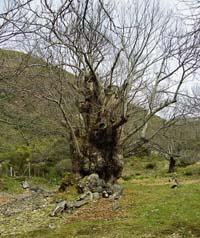Hedges, live fences
2006/09/01 Galarraga Aiestaran, Ana - Elhuyar Zientzia Iturria: Elhuyar aldizkaria
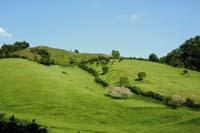
Plant hedges or hedges are formed by living trees and/or shrubs. Some have only trees, some have only shrubs, and many have both. They can have one or more species and can be arranged in long, thin rows or in groups. Everything, with what objectives are put.
In fact, plant barriers perform many functions, and thus select some species or others: with edible, deciduous or perennial fruits, with numerous or few branches...
Sweet closures
One of the functions of plant barriers is livestock conservation. To do this, thorny plants are placed between them that prevent the animals from crossing the barrier. In that case it is like the bracing. But the plant barrier has a number of unsurpassed benefits for livestock.
When the sun heats a lot, the hedge offers shade and freshness to the cattle. In wind, it gives protection, as they slow the wind force by 40-50%. This makes udder pain more difficult than being exposed to wind in distressed dairy cows. In airborne diseases, hedges make it difficult for microorganisms to pass from one side to the other.
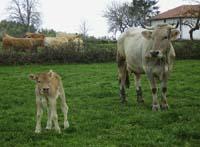
In addition, plant barriers, if properly placed, help prevent the generation of sludge and/or drying of existing ones, so they help
to prevent nail diseases, such as foot and mouth disease. Finally, plant sprouts, leaves and fruits are a valuable dietary supplement for animals and flowers for generous sources of bee raw materials.
Efficient sponsors
In addition to animals, hedges protect farmland and orchards, especially from the wind. This prevents the entry of seeds from the surrounding herbs, thus avoiding the need for herbicides or the need to work so much to eliminate weeds. Likewise, plant barriers prevent the breakage of growing fruit branches, thus preventing the appearance of diseases. They also help not to overthrow calves.
The hedges smooth strong chubascos, pedriscos and galernas, being especially beneficial on the coast to prevent the salt provided by the sea wind reaches the field.

In general, hedges also help to attenuate temperature variations. For example, when the sun hits hard, they prevent the field plants from becoming too transpired, so they do not water. Incidentally, they prevent evaporation of soil water and contribute to night dew. In spring, the temperature around hedges is somewhat higher, which favours crop growth. Finally, winter ice is softer than open spaces and, when neve, plants are protected under hedges.
Moreover, in rainy areas, the waters prevent the conduction of minerals from the soil. Leaking from the soil, water carries magnesium, lime, phosphorus, nitrogen, sodium and other minerals. The minerals remain in the lower layers of the soil, where the roots of the field plants do not reach. Yes, however, of hedge trees. They absorb the minerals and then, by losing their leaves, return them to the earth's surface. Plant barriers therefore help regulate the water and mineral cycle.
Plant barriers also protect the soil, avoiding landslides, as plant roots of hedges stabilize the soil. In this way, they reduce flooding by torrential rains and dry the muddy ones.
In addition, hedges cushion noise and night artificial light and absorb wind dust. In fact, they have shown that plant barriers manage to eliminate 38% of the dust generated by the wind. And trees are especially capable of absorbing heavy metals.
If plant barriers have other benefits, they are also a source of other resources and for landfills. On the one hand, hedge trees can be used to obtain wood, such as steps, stakes or tool handles. Hedges can also give raw material for making baskets and baskets, and if not otherwise, give wood for fire.
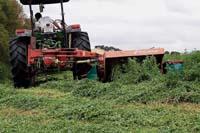
On the other hand, many hedge plants bear fruit: chestnuts, hazelnuts, nuts, cherries, pears, blackberries... And since time immemorial, flowers, buds or barks have been used as medicinal plants, such as white hawthorn, willow or bramble.
Without being directly related to the hamlet, hedges are also of vital importance to wild animals and plants in the area. They are places of residence or refuge of numerous species, as well as suitable places of passage, since they connect fields of cultivation with meadows. In addition, they facilitate the recovery of abandoned land.
To not lose more
However, in recent decades many plant barriers have been lost. Agricultural mechanization, urbanism, industry, transport infrastructure, etc. have caused an alteration of the landscape that has been disappearing as one of the most outstanding characteristics of the landscape, the hedges.
This loss has sometimes been worrying and projects have been created to protect and promote hedges. For example, Goimen, an association working for the development of rural areas of Gipuzkoan Goierri, has published a book: Trees and shrubs in rural areas. The brochure covers the evolution of rural barriers, the benefits they report in agriculture and the quality of life of society, design and care tips, plant tokens, etc., and is presented more widely.
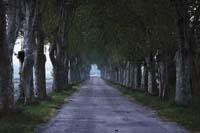
In other countries, such as Britain, the bet on hedges is even more evident. Many things have also been lost there, and they have seen that this has negatively influenced biodiversity. Therefore, they now have solid projects to boost hedges.
The European Union also considers hedges. It used to reward farmers who had great benefits, so it fostered intensive farming and livestock. Later they realized that it is essential to take care of the environment. Consequently, it now grants subsidies for extensive agriculture and livestock, for the creation of ecological products and for landscape conservation, including hedges. This can help stop the loss.
